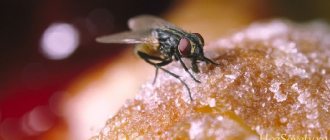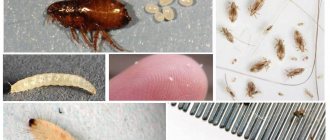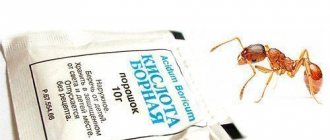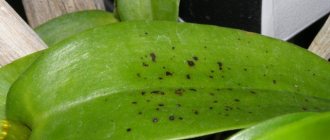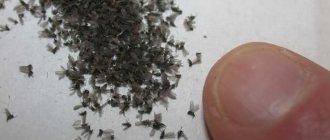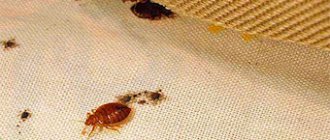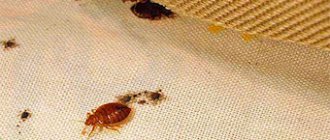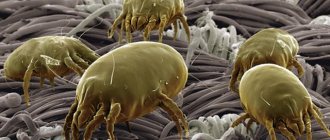The fruit fly is a small, harmless insect, but it is always unpleasant to find one in the house. She is attracted by the smell of spoiled fruits and nectar in the flowers of indoor plants. In the warm season, Drosophila can fly into a living room from the street if you simply spray an air freshener with a berry or fruit scent in the room. How to get rid of fruit flies in an apartment? What products should you use?
Fruit flies and how to get rid of them
Drosophila melanogaster, also known as the fruit fly or vinegar fly, is a small, about 3 mm in length, insect of the Drosophiliadae family from the order Diptera. These flies can be observed near spoiled fruits. In nature, they also feed on plant sap and rotting plant debris. The larvae also feed on microorganisms. Drosophila (we call it “wine fly”) follows the smell of wine.
One way or another, everyone has encountered fruit flies. You should forget about vegetables or fruits that are stored outside the refrigerator, overwater indoor plants - they are right there. This time we got it when we put in apple cider vinegar. It's difficult to get rid of. Therefore, we are making a separate article - we are studying who they are and how to get rid of them without using chemicals.
Fruit flies (lat. Drosophilidae) are a family of the order of dipterous insects (Diptera), including more than 2000 species. It has a worldwide distribution. The most famous genus is Drosophila. Representatives of this genus are also called fruit flies.
The family includes two subfamilies - Drosophilinae and Steganinae - and about 70 genera. The larvae develop in decaying plant debris, fruits, vegetables, and mushrooms.
The easiest way to get rid of fruit flies within a few days is to completely deprive them of food. But here it is difficult to do this - in a village house, in the kitchen, there is always something for them. You can hang adhesive tape - it helps, but not much.
Young larvae cannot penetrate deep into the solid medium and die, while eggs laid in a liquid medium may die.
They say that fruit flies can also eat thermal insulation. True, this is unverified information, but rumors. However, I met them several times. Whether this is true or not, I don’t know.
The fruit fly, Drosophila melanogaster, is known to many aquarists. Both adult insects and their larvae are used as food.
Reproduction of the Drosophila fly and where pests come from
Small insects feed on tree sap and vegetables, but they give preference to fruits. Fruit flies live in large numbers in vineyards and orchards. These places are safe for flies, since they do not harm the crop, which means there is no point in fighting them. In some regions, they can be found in the following places: fruit warehouse, wine cellar, canned fruit and juice factories. In open areas only at air temperatures above 16ºС.
Drosophila reproduction process
The duration of fruit fly ontogenesis is about 10 days at an ambient temperature of 25ºС, and at 18ºС it almost doubles. At favorable temperatures in the winter season, its life cycle can be up to 2.5 months.
During her short life, the female lays up to 400 eggs on organic materials. The larvae appear a day later. Their growth period is five days. During this time, the larvae molt twice. During this time, they feed on rotten fruits and then turn into pupae. The duration of this stage is five days. After this, young flies emerge from them.
Females and males of Drosophila. Reproduction
The Drosophila fly, like all dipterans, has three stages of development: egg, larva, and adult insect.
Morphologically, females and males differ from each other in a number of characteristics. Females are somewhat larger than males, although the size of both can vary greatly depending on feeding conditions, especially the larval period of development.
The female's abdomen is somewhat rounded, with a pointed end; in the male it is cylindrical, with a blunt end. Also, the male can be easily distinguished from the female by the last few segments, which are completely pigmented. The upper chitinous scutes of the chest in insects are called tergites (they, together with the sternites and pleurites, participate in the movement of the wings).
The female has eight well-developed tergites, and the male has six, with the sixth and eighth tergites fused, and the eighth included in the reproductive apparatus. The sternites are the same chitinous plates on the ventral side. The female also has one more of them than the male, and in representatives of each sex the first, second, seventh and eighth sternites are not developed.
Drosophila eggs are somewhat elongated, about 0.5 mm in length. In fresh cultures they are easily noticeable, being deposited on the nutrient medium.
The hatching of the larva from the egg and the beginning of postembryonic development is associated with increased nutrition and growth. Excess food at this stage of an individual’s life is of great importance: to a large extent it determines not only the size of the fly, but also its viability. The first time after hatching, the larvae remain on the surface of the medium. Then they go deep into it and remain there until the moment of pupation.
Pupation begins with the larvae leaving the environment, stopping feeding and crawling briskly for some time. Then they become motionless, significantly shorten in length and acquire the barrel-shaped shape characteristic of a pupa.
The pupal period of development is characterized, on the one hand, by the destruction of larval organs and tissues, with the exception of the gonads and nervous system, and on the other, by the development of the definitive organs of the adult fly from the imaginal discs. The period of puppet transformation is 4 days.
At the end of the third day, the outlines of the eyes become visible through the cover of the pupa, in which by that time a yellowish pigment is produced. A few hours before hatching, the wings are clearly visible, and by this time the eyes become bright red.
Hatching of the fly and its release from the pupa cover is achieved by pumping liquid, as a result of which the pupa shell ruptures and the fly is released.
Flies usually emerge from their pupa early in the morning. Young, newly hatched flies have a long yellowish body, almost devoid of pigment, and short, not yet straightened wings. After 8 hours, the females are ready for fertilization. Females begin laying eggs from the end of the second day and continue until the end of their lives.
Traditional methods
Over the years, people have also figured out how to deal with fruit flies. Fighting with these methods is not difficult, but at the same time very effective.
Recipes:
- fern , elderberry and tansy in all rooms, midges will fly away due to the unpleasant smell for them;
- kerosene, turpentine - it is recommended to add to water when washing floors or windows;
- tomato seedlings , eucalyptus , geranium - flies will fly away due to the unpleasant smell;
- laurel oil - it is recommended to use it for rubbing window frames and jambs.
Tansy is prohibited for use in case of weak cerebral vessels; it can cause headaches in patients.
Drosophila is an insect that, under favorable conditions, is capable of rapid reproduction and development. Read about how long fruit flies live and what their life cycle is on our website.
Midge traps
Glass jar
- Place bait (pieces of fruit, juice or compote) in a glass jar.
- Make a funnel out of paper.
- Make a small hole at the tip of the funnel.
- Insert the funnel into the neck of the jar, tip down. Tape the joint area with tape.
The midges fly to the smell of the bait, end up in the jar, and it’s difficult to get out because the bottom hole of the funnel is small and difficult to find.
A plastic cup
- Take a small plastic disposable cup (you can use one for yogurt, etc.).
- We place bait for midges in a glass: pieces of fruit (apple, peach, nectarine, banana), juice, compote, used tea bag, etc.
- We stretch cling film over the top of the glass.
- We make small holes in the film with a thick needle (the size of the hole should be such that the midge can climb in, but not too big, otherwise it will crawl out back).
- We put the glass where midges often live.
The midges follow the smell, get into the glass, but can’t get out because the holes are small. When the number of midges reaches about 15 pieces, you need to throw the glass in the trash. Repeat the procedure until all the midges are eliminated.
Plastic bag
Place several apple cores in a plastic bag for a day, preferably sour ones. Midges love sour and spoiled things. They will climb into the bag and begin to live there and feed. When they are in a bag, you need to carefully and quickly tie the bag. And throw it away.
Where do fruit flies come from in the house?
There are several ways for a fly to enter an apartment:
- The insect chooses soft, slightly or severely spoiled fruits as a place for laying eggs, since their peel is easier to bite through. Since both the fly itself and its eggs are small in size, it is almost impossible to notice that a vegetable or fruit is infected.
- Fly larvae and eggs can appear in the house along with soil for indoor plants.
- Open windows without mosquito nets or open doors are another way for an insect to get into the apartment. Midges fly to the smell of fruits, indoor flowers or spoiled food.
Prevention of Drosophila
You need to wash the trash can and do some general cleaning in the kitchen. Remove all leftover food. If you have pets, clean out their bowls regularly, and if they leave food behind, clean out the refrigerator. Don't leave dirty dishes behind. Check bags of vegetables regularly and throw away any that are rotten.
You need to find their “home” - usually it is soggy potatoes, “brooding” or rotten vegetables and fruits. If fruit flies have nothing to eat and nowhere to reproduce, they will gradually disappear on their own, and there is no need to breed them with all sorts of dichlorvos and raptors. You need to remove all food, take out the trash, and do not water indoor plants (if any).
Check under the sink - food debris can remain there and become a breeding ground. They can start in a pumpkin that lies on the closet, or in an onion. Often grown in flower pots of indoor plants. Sometimes they fly into ground coffee. They are diluted in a teapot if you do not throw away the tea leaves.
What is the harm of a fruit fly and is there any benefit from it?
Drosophila do not bite, do not suck blood, and do not transmit diseases. In general - harmless. But, hovering in a swarm over a rotting fruit or houseplant, they flicker before your eyes and create special discomfort.
The harm from flies is one thing: if you eat spoiled fruit infected with larvae, you can get intestinal upset.
Drosophila are valuable material for conducting research and experiments, studying genetic mutations and mechanisms of inheritance. The whole point is in the peculiarities of the genetic apparatus of insects, which has similarities with humans. Experts use flies to recognize the mechanisms of serious diseases (Parkinson's, Alzheimer's, diabetes, drug addiction, cancer) and to develop new therapeutic drugs to which fruit flies are sensitive.
Fruit flies are so small that they would go unnoticed by humans if not for their intrusive lifestyle. You can also understand that they have really started up in the apartment when spoilage or areas of rotting appear on fruits and vegetables. If the food begins to rot, then the female insect has probably laid eggs in it or larvae have already appeared.
Useful tips - how to get rid of midges
We take these tips from the comments under the article on the site - many of the tips are original and very interesting! So:
- If a midge starts in flower pots, then you need to stick an ordinary match there, head down, they disappear.
- Most often, flies appear due to rotten potatoes, onions - all spoiled root crops are a breeding ground for flies. The main thing is to remove the source. Gradually they will disappear. Be patient.
- Once a week I do a total cleaning with ultraviolet light, and for a year I have had an ultrasonic trap running, and this is how we save ourselves.
- I solved the problem with flies simply: 1) I collected crawling and flying ones with a hand-held kitchen vacuum cleaner (fortunately they don’t fly fast). 2) at night in the place where they accumulate (for me it’s a jar of kombucha) I turned on a mosquito lamp. The effect is amazing - in the morning there are almost no flies!
- They can be caught perfectly with a vacuum cleaner, even on the fly!
- The jar of flies can be placed in the freezer for a few minutes. They'll die. Verified.
- I poured beer into the lid of the cake so that it barely covered the bottom, a lot of it collected and almost everyone drowned.
- I have found that they really like spoiled bananas. In the kitchen I put a crushed, rotten banana in a bag. Problem solved.
- Adhesive fly tape, spread with red wine. And here they are right there.
My husband accidentally left the remnants of apple compote in a jar on the table, during the night they filled with darkness, at first I covered them with a plastic lid and then thought for a long time about how to kill them, I can’t open them, throwing the jar away in this form is also not a good idea, I decided to put it in the microwave and turned it on for a minute!
The end came to them all instantly! The glass jar needs to be placed in the microwave, covered with a plastic lid, don’t be afraid, it won’t explode, 40 seconds at a power of 600 - 700 is enough.
Tip: pour part of the water, part of the apple cider vinegar or juice and a little dishwashing detergent into a glass jar and put this jar where you have the most flies, and in a few hours you will have almost no flies, they are attracted to this trap .
Apple cider vinegar attracts flies and they fly into this jar; dishwashing detergent prevents them from getting out. This fluid needs to be renewed once a week.
Getting rid of fruit flies is very easy. Buy fly or mosquito repellent plates that are designed for raptors. Install the plates to the window glass and the problem is solved! The sun heats up the plate and releases a deadly poison for flies.
I accidentally discovered a remedy for fighting flies: I started peeling horseradish roots for a horseradish snack, left the horseradish peelings in an open bag - all the flies instantly disappeared. Several days have passed and they have not returned.
Means of destruction
- Fly traps are very effective. They serve as your favorite treats. attract flies by placing saucers around the house with beer, syrup, juice, a mixture of sugar and yeast in water. The flies will congregate above the limpets and drown in the bait. All that remains is to throw away the bait with fruit flies.
- A mechanical trap is also effective: take a plastic cup and place a piece of apple in it. Cover the glass with cling film, making a number of holes in it. The flies will no longer be able to get out and can be thrown away along with the trap.
- A similar method can be considered a sticky fly tape, which should be hung and placed in the kitchen and next to flower pots if flies have settled there.
- You can get rid of flies using conventional insecticide aerosols against flying insects . “Combat”, “Dichlorvos”, “Raptor” are suitable. You can spray the product in places where flies accumulate, after removing all food. After treatment, the room must be ventilated.
Drosophila themselves do not cause much harm - they do not bite people or animals, do not drink blood, and do not carry diseases. The main harm from them is annoying movement in the apartment
You can learn how to choose the most suitable type of Dichlorvos and how to use it.
- You can remove fruit flies using a mixture of apple cider vinegar and dishwashing detergent . They must be mixed in equal proportions and poured into jars. The latter should be placed around the house in places where fruit flies are found. The mixture must be renewed every week. Soon the flies will disappear.
- To destroy the larvae and eggs of flies in the soil, it is worth treating it in pots with a solution of potassium permanganate. Then treat the soil with an insecticide against pests of indoor plants.
- Drosophila are sensitive to temperature. If it is no longer summer outside and it has become quite cool, then you can simply ventilate the room. To do this, you need to open the windows on a cold day and at the same time open all the kitchen cabinets . Drosophila will die from hypothermia.
Theoretically, you can get intestinal upset if you eat fruits infected with fly larvae. In practice, this is also unlikely, since people prefer fresh fruits, and fruit flies prefer spoiled ones
Fruit fly traps
There are also ready-made products on sale to get rid of fruit flies, and they are effective. If you use homemade vinegar, place traps right next to it, otherwise the flies will scatter throughout the house.
The Raptor glue trap with bait liquid will provide effective protection against fruit flies. The principle of operation of the trap is simple. The liquid contains a special substance that attracts flies. Following the smell, insects end up on the sticky surface on the inside of the trap without the ability to get out of it again. At the same time, the trap remains clean and attractive in appearance. A feeling of comfort and cleanliness in your kitchen is guaranteed!
Directions for use: Open the box. Take out a can of liquid. Unscrew the cap of the can. Take out the cardboard tape with the sticky layer. With a sharp movement, remove the protective paper from the adhesive layer.
Fold the trap in the form of a “house” with the sticky side with the printed pattern inside, connecting the lock with the inscription “insert into grooves” in the direction of the arrows. Place the trap on the neck of the can. Make sure the perforation on the trap fits snugly around the neck of the can. Place the trap in places where insects grow - in kitchens near fruit and in pantries - cabinets for storing food - potatoes, onions, etc. Do not place in drafts. The trap retains its ability to attract flies for up to 30 days. Consumption rate – 1 trap per room of 10-12 m2.
And one more trap: Aeroxon trap for fruit flies. It is structured in approximately the same way, only here there are 2 pieces in the package. The flies begin to fly in very quickly - excellent cleaning of the room!
The Aeroxon glue trap is designed to kill tiny flies flying over rotting fruit. Fruit flies are found in kitchens, utility rooms and warehouses where fruits and vegetables are stored. The flies are lured with a special bait onto the adhesive surface of the trap and are firmly glued to it. The trap can be placed in close proximity to food products; it is completely safe.
Source: hnh.ru/food/2010-09-19-1
Causes and ways of appearance
Drosophila flies quite often appear in apartments and private houses. There are several main reasons:
- Drosophila have an excellent sense of smell, and if the room smells of a rotting banana or pear, insects will fly to the smell from afar.
- With the onset of autumn, heat-loving fruit flies are looking for more comfortable living conditions.
- Midges get into the house by accident.
In the apartment
There are several ways to enter the house:
- with purchased fruits and vegetables;
- with plants brought into the house;
- with contaminated soil;
- through ventilation;
- through the window from the street.
Once inside the house, fruit flies begin to multiply very quickly.
Fruit flies: how to quickly get rid of annoying insects
Once fruit flies appear in your kitchen, they will not leave. And, what good, they will also multiply. You can’t do this without special tools—some of them are stored in your home.
Small fruit flies, attracted by the smell of rotting fruit, garbage and forgotten food, settle in the apartment for a long time, refusing to voluntarily leave the nourishing place. They are quite harmless - at least they do not bite humans or domestic animals. But they multiply at tremendous speed.
Just imagine: a female Drosophila can lay up to 500 eggs, and within 24 hours the first larvae are born! So, if you notice a swarm of small brown flies in the kitchen, don’t hesitate: sort through the food (flies are attracted to darkened bananas and rotting fruits and vegetables), throw out the trash, clean up the kitchen and start eliminating annoying insects - with the help of these simple household funds.
How to deal with fruit fly?
Having noticed the appearance of uninvited guests in the house, you need to carefully inspect the apartment and find all the spoiled food: fruit forgotten on the table, sour leftover food in the trash can, pet food in a bowl that has spoiled in the heat. If tea leaves are used as a fertilizer for indoor flowers, you also need to inspect the pots with soil.
All detected possible sources of Drosophila must be disposed of immediately by sending them to the trash. Containers for storing fruits and vegetables should be thoroughly washed to remove larvae and eggs invisible to the eye from the surfaces.
Flowers need to be transplanted into pots with fresh soil. If some of the leaves or flowers of the plant begin to rot, they are removed. The indoor plants themselves are watered often, but little by little - waterlogged soil attracts midges.
Traditional methods
To clear your apartment of midges, you can build your own traps:
- Since one of the Drosophila's favorite treats is banana, it can be used as bait. Peel the fruit and place it in a plastic bag or plastic bottle. Using a toothpick, make several holes in polyethylene or plastic. Leave the trap near the midge habitat. Over the next 2 days, a significant portion of the midges will fly inside, but they will not be able to get out.
- Just as much as bananas, the fruit fly Drosophila loves honey, fruit juice or apple cider vinegar. The trap is made like this: take a deep container, pour one of the listed liquids into it, and cover it with a bag or cling film. Make holes with a toothpick. Insects attracted by the smell will climb into the trap.
- Another possible option is to use a glass jar. A piece of banana, orange or any spoiled fruit is placed at the bottom. A cone is made from a sheet of paper with a small hole at the top. Turning it over, insert the blank into the neck of the bottle. The midges will easily get inside the jar, but they will not be able to fly back out.
- Beer, water diluted with sugar and yeast are poured into a disposable glass and left close to the accumulation of insects. Hearing a tempting smell, the midges will fly towards it and drown.
In addition to traps, you can use other means.
Smoking
The crushed hard camphor is placed in an old frying pan (one that you don’t mind throwing away) and put on fire. As soon as the frying pan is hot and steam starts to flow, the container is carried throughout all rooms of the apartment. The resulting smoke is not dangerous for humans, but midges will not tolerate it.
Poison for midges
A couple of recipes for poisonous treats for insects:
- ½ cup of milk is mixed with 40 g of sugar and the same amount of ground black pepper. Soak a paper napkin or a piece of toilet paper in the liquid and place it on a plate next to the midges. After a while there will be no insects left.
- 10 g of honey is combined with 1 g of saccharin, and a napkin is moistened with this mixture. Place it on the windowsill.
Vacuum cleaner
The place where midges have accumulated is treated with a vacuum cleaner. A running unit will draw in insects, trapping them in a dust bag. The container must be emptied outside the apartment.
Cold
Drosophila are very sensitive to temperature; hypothermia is detrimental to them. If they attacked the apartment in winter, it is enough to simply leave the window in the kitchen open when leaving the house. After a few hours, all the flies will die.
This way you can destroy adult insects, but if there are larvae left somewhere, then after a while the insects will appear again. To prevent this from happening, it is recommended to thoroughly wash the pet’s trash can and bowl, and water the soil in flower pots with a manganese solution.
Potassium permanganate or matches
This method is suitable if there are flies on the plant. Prepare a weak solution of manganese and treat flowers with it twice a month.
You can also use regular matches: stick them head down into the ground in the pot. The sulfur from the match will destroy the larvae.
Geranium
Fruit flies cannot tolerate the smell of geraniums. If there are midges in the kitchen, you need to get rid of the spoiled fruit and place a pot with this plant on the windowsill of the room.
Garlic
Midges do not like the smell of garlic, so placing the crushed head near the Drosophila habitat helps. After a few hours there will be no insects.
Orange and clove
A stick of spice is stuck into the orange peel and placed next to the place where midges gather.
Store products
How to get rid of fruit flies if you don’t have time to bother with building traps or preparing poisonous compounds? You can use ready-made traps or preparations.
Manufacturers offer a choice of:
- Repellents. Tapes impregnated with chemical compounds, from which vapors that poison insects emanate. Such products cannot be called completely safe for humans - the room in which the tape is located must be ventilated.
- Sprays. Special liquids containing fatty acids, falling on larvae and insects, destroy them. They are not dangerous to humans.
- Zappers. Modern devices that affect insects with electricity. The only drawback of some models is their high power consumption.
- Traps. Factory-made traps do not contain poison; most of them use a substance that attracts insects, and the midge that flies into the trap dies of hunger, unable to get out. You can even install such devices in the kitchen without fear that they will harm a person or animal.
Vinegar
Unfiltered apple cider vinegar is considered the best weapon in the fight against fruit flies. You can buy it at an organic grocery store or make it yourself.
Pour a small amount of liquid into a glass, cover it with a layer of cling film and secure it with a rubber band. Using a sharp pencil, make several holes in the “lid”.
The sweet smell of apple cider vinegar will definitely attract insects. Once they get inside the glass through the tiny holes, they will not be able to get back out.
Note: Add a small amount of dishwashing liquid to the vinegar. It will give it viscosity - stuck flies will definitely not be able to get out of the trap and will soon die.
Getting rid of fruit flies using traps
- Place the watermelon and melon rinds in a plastic bag, without holes, preferably thick enough, and leave open for a while. Then go to the bag and quickly close it. All flies will remain on the crusts, attracted by their sweet smell.
- Take a small container, maybe a jar or a bottle with a wide neck, put pieces of pears or any other sweet fruit on the bottom, make a cone out of cardboard or paper and place it with the sharp end inward. The flies will fly in, but they won’t be able to get back out.
- Pour any fruit juice into flat containers, after adding a little black pepper to it. Black pepper is poisonous to these insects.
- In a jar, preferably with a narrow neck, leave the fruit juice mixed with liquid soap (a small amount). Having feasted on the juice, the flies will not be able to get back, sliding on the detergent, and will remain there. Juice can be replaced with apple cider vinegar.
- Mix honey and sugar in a ratio of 10:1. Wet napkins with this solution and spread them on surfaces where flies are most common (window sills or dining tables).
- Mix 200 ml milk with sugar and a small amount of pepper powder. We also soak napkins in the mixture.
- Milk, soda and formalin - 6:5:12. Pour into flat containers and add pieces of black bread. This mixture is poisonous for fruit flies.
- The simplest thing is to hang sticky catch tapes throughout your living space.
Catching belt and 3 more ways to protect trees from garden pests
Lemon
Fruit flies are attracted to sour smells. If you have a lemon on hand, use it to catch insects. Trim the edges of the fruit so that it can be placed horizontally when cut.
Take a plastic or glass container with a lid. Squeeze a little lemon juice into it, and place the citrus itself on top. Make a small hole in the lid of the container - large enough so that the fly can easily crawl through it, but small enough so that it cannot find its way back.
Close the container and place it in a place where there is a high concentration of insects. Once there are enough fruit flies inside the trap, pour water into it (through the hole in the lid) and place it in the microwave for 15-30 seconds.
Effective methods of controlling Drosophila flies
Fruits, berries and vegetables around which these tiny creatures scurry around lose their appetizing appearance. In addition, they can move throughout the apartment, flying into the bathroom, into the toilet, and also into the trash can if it is open. After this, they can visit the bread bin or stick to the berries and fruits on the table. As a rule, in such cases, a person loses his appetite, and he looks for ways to get rid of these insects. In most cases, it is the person himself who is to blame for the presence of Drosophila flies in his home.
Naturally, they can appear in any apartment, but not in every one of them they take root, since this requires special conditions.
If there are no conditions for the life of such insects, then they will disappear on their own, as if they were never there.
Therefore, you should act like this:
- First of all, it is necessary to carefully analyze everything in order to understand what attracted these insects.
- The next stage is to create unfavorable conditions for the existence of fruit flies by putting all fruits, berries and vegetables in the refrigerator, throwing out the garbage and washing the bucket, and also taking measures to ensure that the dishes are washed immediately after eating.
- Then you need to try to catch those insects that are in the apartment. There are many fairly simple methods for this.
- After this, all that remains is to adhere to these rules and Drosophila flies are unlikely to re-choose an apartment for their life activities.
On a note! To destroy such insects, it is better not to use pesticides, especially if they are detected in time. It is enough to use simple traps that can be made in just a couple of minutes. If there is no access to food in the apartment, especially spoiled food, then these insects will never be interested in this apartment.
It makes no sense to use Dichlorvos, especially in the kitchen, especially since you can get by with simpler methods of control.
Making your own traps
To catch these tiny and annoying insects, you can build simple devices from available materials. As a rule, their production takes no more than 10-15 minutes, depending on the complexity of the design. It is possible to make a trap:
- From an ordinary plastic cup . For these purposes, a container of baby yogurt is suitable, which needs to be dried, although this is not necessary, since a dirty cup attracts these insects more. You can place a used wet tea bag inside the cup or pour a little compote or beer into it. A cling film is stretched over the top, in which several holes are made with a needle. Their diameter should be such that a Drosophila fly can crawl through them.
- From a plastic bag . This is a fairly simple method of catching insects, which, unfortunately, does not provide a 100% guarantee, since a quick reaction is needed. Rotten fruits or vegetables are placed in the bag, after which it is covered, but not completely. In about half an hour, there will be quite a few people in the bag who want to taste spoiled food. After this, all that remains is to close the bag with a deft movement and tie it, then throw it into the trash can, which must be immediately emptied of debris, otherwise some of the insects may get out of the bag.
- From a glass jar . This is also a simple method, which in our time is better implemented using a plastic bottle. To do this, take a bottle, after which its third part, namely the conical part, is cut off. This part is turned over and inserted back into the bottle. It turns out to be a container with a funnel, but before that you need to place bait in the bottle in the form of spoiled berries or fruits. Flies, once inside this container, will no longer be able to get out. This trap is quite effective when there are large concentrations of insects.
Drosophila trap!
Folk remedies
It is not difficult to control these insects with the help of aromatic substances, combined with the use of the simplest traps.
Eg:
- The smell of heated camphor oil repels annoying insects.
- Various essential oils, if poured into an aroma lamp.
- Wormwood, lavender, tansy and the aroma of coniferous trees will quickly help cope with the invasion of fruit flies.
- A candle with a pine or spicy scent will also not appeal to small pests. You need to light the candle and slowly walk through the rooms with it, and then leave it in the kitchen to burn out.
Red wine
These fruit flies are such gourmets - they love to pamper themselves with fruit, and they will not refuse red wine. If you have some left at the bottom of the bottle, use it to fight off pesky insects. Place the open bottle in the area where the largest number of flies have accumulated and wait a little.
The smell of wine for fruit flies is like an exquisite aroma of perfume. Once they feel it, they will immediately head inside the bottle. And all you have to do is close it in time and throw it in the trash.
Fresh air and natural smells
Oddly enough, flies are afraid of fresh air, especially cold air. It is best to leave the room open overnight. The flies will simply freeze in the cold night air.
Drosophila can be scared off by smells:
- Elderberry and fern. Their leaves need to be spread throughout the room.
- Turpentine or kerosene can be added to the water for cleaning windows. People and pets do not recognize the smell, but this will be enough to remove unpleasant guests.
- The smell of tomato seedlings will also scare away pests.
- Geranium or eucalyptus. Their smell is quite unpleasant to fruit flies.
Paper funnel
Place a piece of rotten fruit or a banana peel soaked in beer at the bottom of a glass jar (alcohol attracts flies no less than the aroma of fruit). Make a funnel out of carbon paper and place it in the container with the sharp edge facing down.
This is the simplest version of a fruit fly trap. Attracted by the pleasant smell, they will get inside the jar and will not be able to get back out.
Source: goodhouse.ru/home/najdi-vremja-dlja-zhizni/plodovye-mushki-kak-bystro-izbavitsya-ot-nadoedlivyh-nasekomyh/
How to get rid of midges in the kitchen in 3 steps
These small midges themselves do not pose a threat to humans, but a larva accidentally swallowed with food can cause infection of the digestive tract. The fertility of fruit flies is extremely high: one female produces from 200 to 1,500 or more eggs. Insects can live in the kitchen for two months, which means the risk of developing myiasis increases.
Drosophila eggs can enter the home on the fur of cats and dogs, in food, or on shoes. The food supply of midges is rotting organic matter.
This could be rotten fruit, an unfinished glass of wine, spilled milk, waste lying in the trash can, a piece of meat that fell into a crevice while cooking, or damp soil from indoor plants. The list can be expanded endlessly. Midges even feast on pet food.
Drosophila flies: who are they and what are they?
Drosophila fly or fruit fly
Drosophila flies are fruit flies that are small in size - no more than 3 mm. They live only 2 months, but they multiply quickly: one female can lay more than 2000 eggs! For this reason, getting rid of these insects is not so easy. Within 10 days the larva matures into an adult.
Drosophila flies are heat-loving creatures; they are more common in southern cities rather than northern ones. Insects do not bite people or animals. But they are annoying because they constantly flicker before our eyes, multiply quickly and live in food.
Such midges can make up to 250 wing beats per second - according to this indicator, they are ahead of all other types of insects. At the same time, the human ear can catch the noise of their flight, since the wings of midges have a special shape.
How to get rid of midges
Step 1. Conduct an audit
The main enemy of kitchen midges is the most ordinary hygiene, which deprives them of food. Therefore, when fruit flies appear, first check the inside of the kitchen:
- Sort through the potatoes, onions, and carrots stored for the winter. Throw away or recycle rotten vegetables. Do this regularly.
- Place separate containers for bulk products to prevent moisture from getting into them. While pouring, carefully check the grains for the presence of fruit fly larvae.
- Place all spoilage foods in the refrigerator. Try to fill the vase with fruit as it becomes empty, rather than later.
- Wash the bread bin thoroughly and dry. Only after that put bread in it.
- If there are plants in the kitchen, loosen the soil, remove fallen leaves, thoroughly wipe the outside of the pots and wash the tray with cleaning product. If there are midges in flower pots, change the soil to new one, and irrigate the leaves of the plants with a weak solution of potassium permanganate.
- Take out the trash and wash the bucket several times with a strong disinfectant.
- If you have pets, regularly change the water in the drinking bowl and make it a rule to put leftover food in the refrigerator or a specially designated container.
- Check the cleanliness of the refrigerator. Be sure to tidy it up if there are any smudges, old food debris, or moldy food.
Step 2: Do some spring cleaning
It is very important to thoroughly clean all kitchen surfaces. The breeding ground for midges may suddenly appear in some crack where, for example, a piece of an apple accidentally fell.
- Wash the stove thoroughly, especially its side walls. The oven can be quickly cleaned with steam. Place a baking tray with water diluted with dishwashing detergent inside. Preheat the oven to 100°C and leave for 30 minutes. Now the grease and burnt marks can be easily removed with a damp cloth.
- Be sure to check your microwave. To get rid of stubborn fat, use a mixture of 500 ml of water and 1 tablespoon of citric acid (or 4 tablespoons of lemon juice). Heat the resulting solution in the microwave for 5–10 minutes at maximum power, then let the device cool for 5 minutes and wipe the surface with a sponge.
- Thoroughly clean all hard-to-reach places with a brush and wash the floors. Pay special attention to the compartment under the sink.
- One of the breeding places for midges is the sink drain, where small pieces of organic matter often get stuck. To clean the drain, you can use any pipe cleaner or a traditional recipe. Pour a few teaspoons of baking soda into the hole, pour in a glass of vinegar and wait 20 minutes. Then rinse with hot water.
Types of insects in flower pots
Among small pests, there are three main types:
- Drosophila are fruit flies or fruit flies that closely resemble small regular flies in appearance.
- Sciarids are fungus gnats that, upon close examination, look very similar to gnats.
- Whiteflies (aleroidids) are white or light gray aphids that live mainly under the leaves of the plant.
Adults themselves do not harm the flowers, but their larvae, which can grow in the soil of a flower pot, can ruin the root system of the plant, especially young shoots. Therefore, with the appearance of insects, you should immediately think about how to remove midges from flowers in pots.
How to prevent kitchen bugs from returning
To prevent fruit flies from appearing again, you must follow these simple rules:
- Take out the trash promptly and do not allow the waste bin to become dirty.
- Do not leave food or uneaten food on the table. Be sure to make room in the refrigerator for perishable foods and in plastic containers for cereals.
- Wash dishes on time.
- Wet clean the kitchen every week. Try to wipe the stove, sink and counters dry.
- Water your house plants in moderation, immediately remove fallen leaves, and sprinkle the soil with sand or decorate with decorative stones. This will prevent the appearance of midges.
Source: lifehacker.ru/kak-izbavitsya-ot-moshek/

